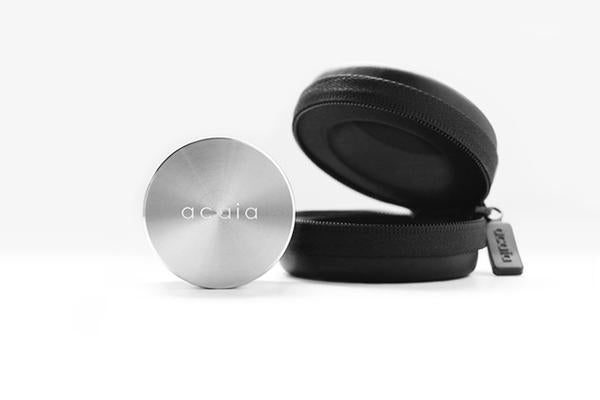
This block of steel will help you make better coffee.
Scales are a wonderful aid for making delicious coffee more easily. Coffee is hard to brew well because there are so many variables to control (grind size, ratio of beans to water, water quality, water temperature, agitation, etc.), and scales let us keep many of those variables consistent.
Using scales can also give us the experience of others to add to our own. One person can say to another, "I like this Kathunguri with 20g of coffee and 340g of water, and I add the water in these amounts at these times." It's a recipe. We don't try to make chocolate chip cookies or spaghetti carbonara or pho with no prior instructions – why should we make coffee without prior instructions?
But how do we know that my 20g is the same as your 20g? How do we keep the scales consistent?
Every Acaia scale is hand calibrated at the factory, but once the scale leaves the factory we cannot control where or how the scale is used. Gravity is not the same all over the Earth, nor is the weather, and these are both things that affect how a scale measures weight. In order to standardize measurement and make our experience valid and communicable for each other, precision scales need to be calibrated. Often. We recommend at least once a week, with a daily check with the calibration weight.
We've had many customers ask us which calibration weights we recommend, and we had trouble finding weights we were confident in that were not incredibly expensive. So we made our own.
The Acaia 500g calibration weight is machined from stainless steel (for durability, so it stays 500g) and Acaia-certified as an F2 weight. To keep the weight safe and accurate, it comes with its own EVA foam travel case.
To calibrate your Acaia scale, simply start with the scale in weighing-only mode and press the T button six times in quick succession. The scale will prompt you for a calibration weight. Place the weight on the scale and wait until the scale says "End".
For the calibration to be most effective, calibrate the scale the same way you would use it. Calibration should occur in the place you will be using the scale. If you leave your scale on all day, make sure the scale has been on for 15 minutes before calibration. If you only turn on your scale in the morning to brew coffee, calibrate shortly after turning the scale on. Try to reproduce everything about how you will be using the scale normally.
Written by Nick Kohout, Sales Manager


Share:
New sponsorship policy
New! Fortified Lunar Base